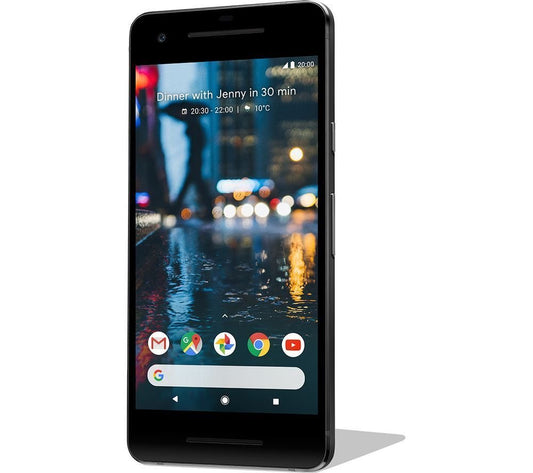In a world dominated by smartphones, talk-only cell phones offer a breath of fresh air for those seeking simplicity. These devices focus solely on voice communication, stripping away the distractions of apps and internet access. Perfect for seniors, minimalists, or those looking to disconnect, talk-only cell phones provide an easy and reliable way to stay in touch.
Key Takeaways
- Talk-only cell phones focus on voice communication, eliminating the need for apps and internet access.
- These phones are ideal for seniors, minimalists, and anyone looking to reduce digital distractions.
- Popular models include the A7, TCL Classic, and Lively Jitterbug Flip2, each offering unique features.
- Choosing the right carrier is crucial, with options for compatibility with major carriers and various plans.
- Additional features like emergency buttons, long battery life, and durability make these phones practical and reliable.
Understanding Talk Only Cell Phones
Talk only cell phones, often referred to as dumb phones, are designed for users who prioritize voice communication over other functionalities. These devices strip away the complexities of modern smartphones, offering a straightforward and reliable means of staying connected through calls.
What Defines a Talk Only Cell Phone
A talk only cell phone is characterized by its primary focus on voice calls. Unlike smartphones, these devices typically lack advanced features such as internet browsing, social media apps, and high-resolution cameras. Instead, they offer basic functionalities like calling, texting, and sometimes simple tools like a calculator or FM radio.
Key Features to Look For
When choosing a talk only cell phone, consider the following features:
- Battery Life: Long-lasting battery is crucial for extended use without frequent recharging.
- Durability: Many models are built to withstand drops and rough handling.
- Simple Interface: Easy-to-navigate menus and large buttons are ideal, especially for seniors.
- Compatibility: Ensure the phone works with your preferred carrier.
Benefits of Using a Talk Only Cell Phone
There are several advantages to using a talk only cell phone:
- Reduced Distractions: Without apps and internet access, users can focus on conversations and essential tasks.
- Cost-Effective: These phones are generally more affordable, both in terms of initial purchase and monthly plans.
- Ease of Use: The straightforward design makes them the easiest cell phones for seniors to use.
Embracing a talk only cell phone can simplify your life, reduce screen time, and help you stay connected in a more meaningful way.
Popular Models of Talk Only Cell Phones
A7: Features and Specifications
The A7 is a simple yet functional talk-only cell phone. It comes with a camera, FM radio, and music player. The A7 is unlocked for use on T-Mobile’s networks, both postpaid and prepaid. It includes a SpeedTalk SIM card with plans starting at $5 a month, and you can keep your current phone number.
| Feature | Specification |
|---|---|
| Camera | 1.3 MP |
| Connectivity | No Wi-Fi or Bluetooth |
| Talk Time | 7 hours, 96 hours standby |
TCL Classic: Pros and Cons
The TCL Classic is a versatile talk-only phone available for all three major U.S. carriers. It features two color screens: a 2.8-inch internal display and a 1.44-inch external display showing time, date, and battery status. Each model offers different battery life, ranging from 8 to 14 hours of talk time.
Pros:
- External color time/status screen
- High-quality voice calls
- Long battery life
Cons:
- Low-resolution camera
- Slightly different versions from each carrier
| Feature | Specification |
|---|---|
| Camera | 2 MP |
| Connectivity | Bluetooth 4.2 |
| Talk Time | 8-14 hours, 12-16 days standby |
Lively Jitterbug Flip2: Ideal for Seniors
The Lively Jitterbug Flip2 is designed with seniors in mind. It has large numeric keys and a dedicated 24/7 urgent response button. The phone is lightweight and comes with live U.S-based customer service. However, it is only compatible with Lively cellular service.
Pros:
- Large numeric keys
- Dedicated 24/7 urgent response button
- Live U.S-based customer service
- Front selfie camera
- Lightweight
Cons:
- Only compatible with Lively cellular service
Choosing the Right Carrier for Your Talk Only Cell Phone
Compatibility with Major Carriers
When selecting a carrier for your talk-only cell phone, compatibility is crucial. Most talk-only phones are unlocked, meaning they can work with various carriers. However, it's essential to verify that your chosen phone is compatible with the carrier's network. For instance, many talk-only phones won't work on Verizon's network. Additionally, ensure the phone operates on a 4G network, as 3G networks have been phased out by major carriers like AT&T and T-Mobile.
Prepaid vs. Postpaid Plans
Choosing between prepaid and postpaid plans depends on your usage and budget. Prepaid plans offer flexibility without long-term commitments, making them ideal for those who want to control their spending. On the other hand, postpaid plans might provide better rates for heavy users. Consider your calling habits and budget before deciding.
International Usage and Roaming
If you travel frequently, check the international usage and roaming options offered by carriers. Some carriers provide affordable international plans, while others might charge high fees. Ensure your talk-only phone supports international roaming if you plan to use it abroad. This can save you from unexpected charges and keep you connected wherever you go.
Choosing the right carrier ensures you get the best service and value for your talk-only cell phone. Always check compatibility, plan options, and international features before making a decision.
Additional Features in Talk Only Cell Phones
Camera and Multimedia Capabilities
While not necessarily smart, many talk-only cell phones come with handy features like a camera, FM radio, and music player. For instance, the A7 model includes a 1.3 MP camera, which is sufficient for basic photography needs. These phones may not have the high-resolution cameras found in smartphones, but they still offer a way to capture moments.
Battery Life and Durability
One of the standout features of talk-only cell phones is their impressive battery life. Models like the Kyocera DuraXV Extreme+ offer multiple days of talk time and are built to withstand harsh conditions. These phones are often water-, dust-, and drop-proof, making them ideal for users who need a reliable device in tough environments.
Emergency and Safety Features
Many talk-only cell phones are designed with safety in mind. The Lively Jitterbug Flip2, for example, includes a dedicated 24/7 urgent response button, making it an excellent choice for seniors. These phones often come with large numeric keys and loud speakers, ensuring that users can easily make calls in emergency situations.
Talk-only cell phones provide a simplified communication solution without the distractions of a smartphone. They are perfect for those who prioritize basic communication and reliability over advanced features.
The Future of Talk Only Cell Phones
Trends in Simplified Communication
The demand for talk only cell phones is on the rise as people seek to simplify their lives. More users are opting for these devices to avoid the distractions of social media and constant notifications. This trend is especially popular among parents who want to protect their children from the negative effects of excessive screen time.
Potential Technological Advancements
While talk only cell phones are not necessarily smart, they are becoming more advanced. Future models may include better voice call quality, improved battery life, and enhanced safety features. Some models might even offer basic internet access for essential tasks like texting and emergency services.
Consumer Demand and Market Growth
The market for talk only cell phones is expected to grow as more people look for ways to disconnect from their smartphones. This growth is driven by a desire for a simpler, more focused lifestyle. Companies are responding by offering a variety of models to meet different needs, from basic communication to more advanced features like cameras and music players.
The future of talk only cell phones looks promising as more people seek to balance their digital lives with real-world interactions.
How to Transition to a Talk Only Cell Phone
Switching from a smartphone to a talk-only cell phone can be a refreshing change. Here’s a guide to help you make the transition smoothly.
Steps to Switch from a Smartphone
- Evaluate Your Needs: Determine why you want to switch. Is it for simplicity, fewer distractions, or better focus?
- Choose the Right Model: Research and select a talk-only cell phone that fits your needs. Consider factors like battery life, durability, and ease of use.
- Backup Your Data: Before making the switch, back up your contacts, photos, and other important data from your smartphone.
- Purchase and Activate: Buy your new phone and activate it with your carrier. Ensure it’s compatible with your current plan.
- Transfer Contacts and Data: Use a SIM card or a transfer tool to move your contacts and essential data to your new phone.
- Learn the Basics: Familiarize yourself with the basic functions of your new phone, such as making calls and sending texts.
Transferring Contacts and Data
Transferring contacts and data is crucial when switching to a new phone. Here are some methods:
- SIM Card Transfer: If your contacts are stored on your SIM card, simply insert it into your new phone.
- Bluetooth Transfer: Use Bluetooth to transfer contacts from your smartphone to your new talk-only phone.
- Manual Entry: For a fresh start, manually enter important contacts into your new phone.
Adjusting to a Simplified Lifestyle
Adapting to a talk-only cell phone can take some time. Here are a few tips:
- Embrace the Change: Enjoy the simplicity and reduced distractions. Use this time to focus on other activities.
- Stay Connected: Inform your friends and family about your new number and phone. They can still reach you for important matters.
- Explore New Hobbies: With fewer distractions, you might find more time for hobbies and activities you love.
Transitioning to a talk-only cell phone can be a liberating experience, offering a break from the constant notifications and digital noise. Embrace the simplicity and enjoy a more focused lifestyle.
Conclusion
In a world where smartphones dominate, talk-only cell phones offer a refreshing alternative. These simple devices focus on what phones were originally meant for: making calls and sending texts. They are perfect for those who want to avoid the distractions of social media and constant notifications. With features like long battery life, easy-to-use interfaces, and even emergency response options, these phones are practical for seniors, kids, and anyone looking to simplify their communication. As technology continues to evolve, it's clear that sometimes, less is more.
Frequently Asked Questions
What is a talk only cell phone?
A talk only cell phone is a mobile device designed primarily for making and receiving voice calls. It usually lacks advanced features like internet browsing, apps, and multimedia capabilities.
Who can benefit from using a talk only cell phone?
Talk only cell phones are great for seniors, kids, or anyone who wants a simple device for basic communication without the distractions of a smartphone.
Are talk only cell phones compatible with major carriers?
Yes, many talk only cell phones are compatible with major carriers like AT&T, T-Mobile, and Verizon. However, it's always best to check compatibility before purchasing.
Do talk only cell phones have emergency features?
Yes, some talk only cell phones come with emergency features like a dedicated emergency button, which can quickly connect you to emergency services or a predefined contact.
Can I keep my current phone number when switching to a talk only cell phone?
Yes, in most cases, you can transfer your existing phone number to your new talk only cell phone. This process is known as number porting and is usually handled by your carrier.
What is the battery life like on talk only cell phones?
Talk only cell phones typically have longer battery life compared to smartphones. Some models can last several days on a single charge, depending on usage.








